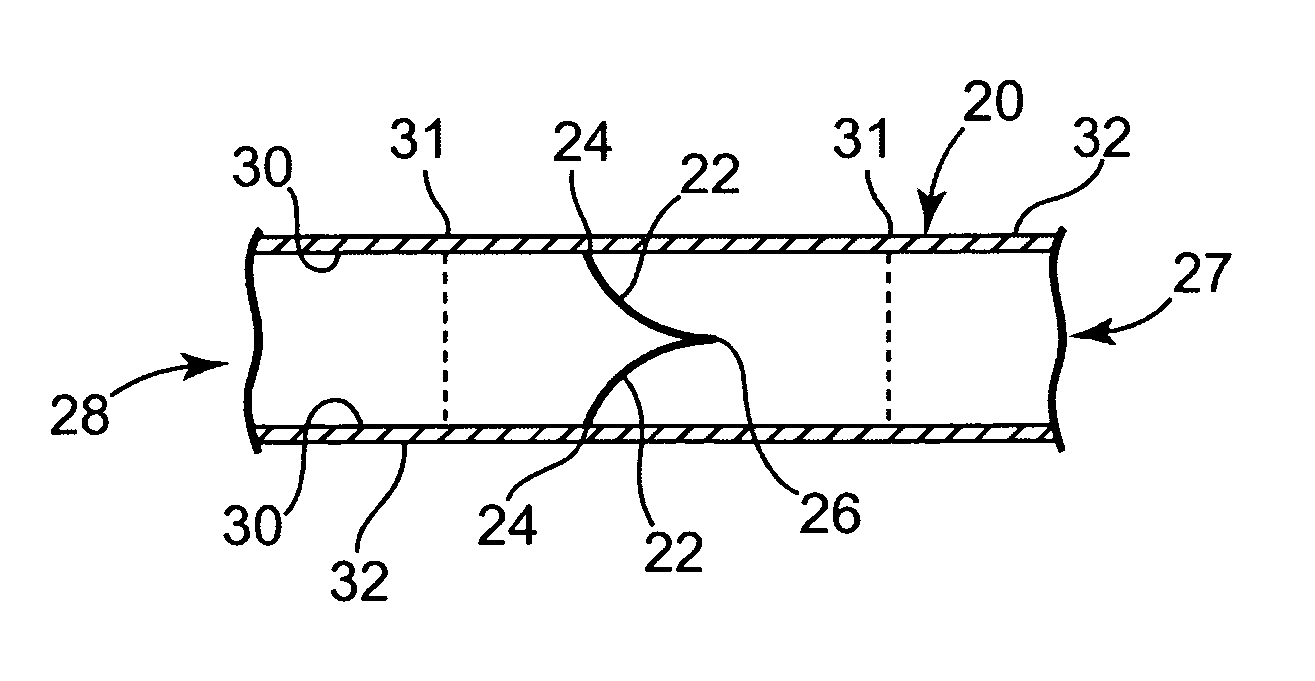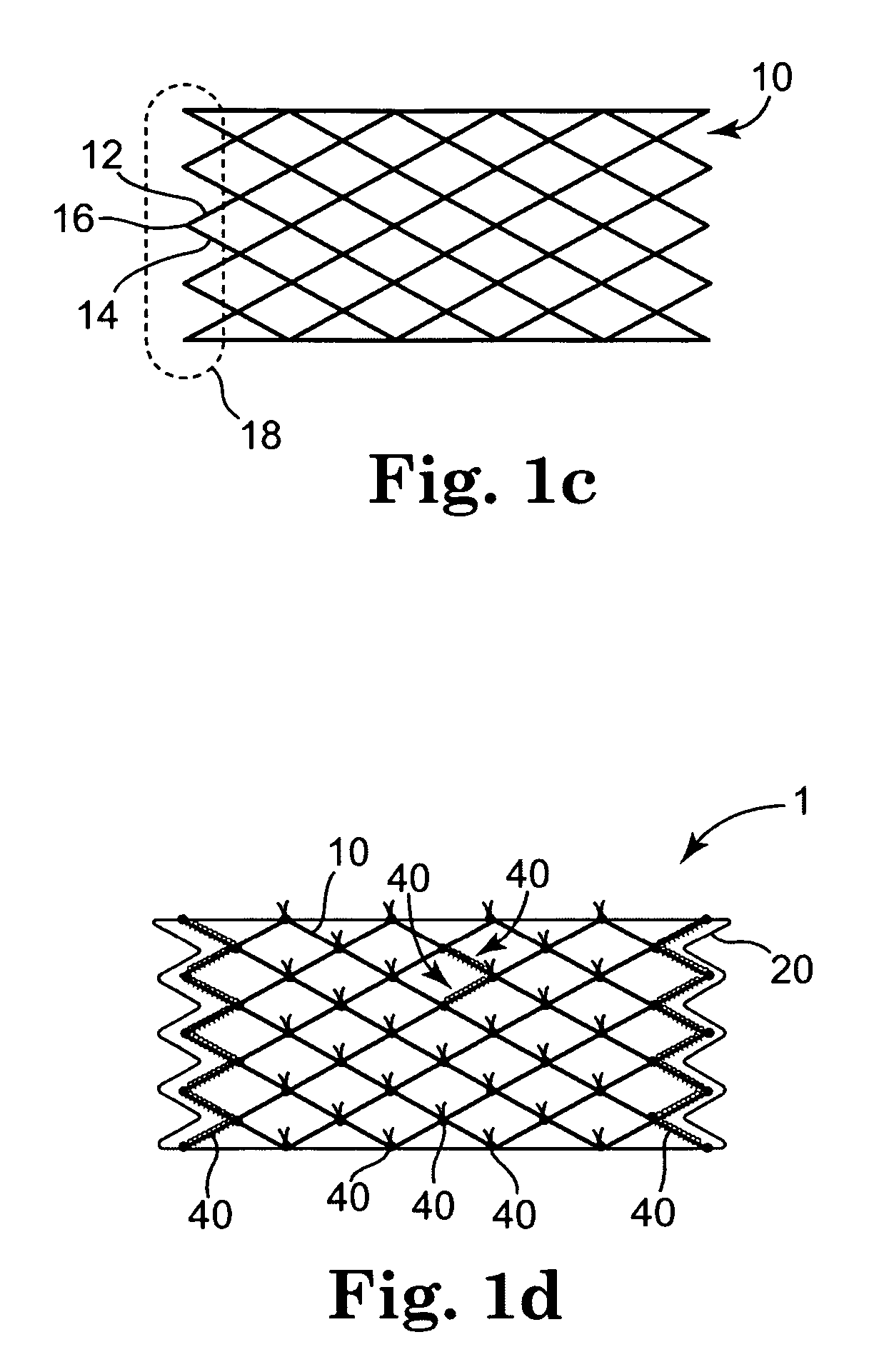Composite heart valve apparatus manufactured using techniques involving laser machining of tissue
a heart valve and tissue technology, applied in the field of composite medical devices, can solve the problems of increasing the workload placed on the heart, requiring emergency surgery, and stenosis and insufficiency, and achieve the effects of improving yield, reducing scrap rate, and improving tissue quality
- Summary
- Abstract
- Description
- Claims
- Application Information
AI Technical Summary
Benefits of technology
Problems solved by technology
Method used
Image
Examples
Embodiment Construction
[0031]For purposes of illustration, the present invention will be described in the context of the manufacture of a composite, percutaneous heart valve 1 as shown in FIG. 1d using the components shown schematically in FIGS. 1a, 1b, 1c, and 1d. Heart valve1 is useful for percutaneous implantation, especially in the pulmonary position for mammalian patients including humans, horses, dogs, and cats. Heart valve 1 is composite in the sense that valve 1 incorporates components derived from both tissue and nontissue sources. FIGS. 1a, 1b, 1c, and 1d show the tissue component in the form of a vein segment 20 incorporating a leaflet-based valve and the nontissue component in the form of stent 10. The vein segment 20 as illustrated includes leaflets 22, extending from the wall of the vein segment 20 from the leaflet bases 24 to commissures 26, which define the outer meeting points of the furthest downstream portions of the leaflets. In use, blood enters the inflow end 28 and exits the outflow...
PUM
| Property | Measurement | Unit |
|---|---|---|
| wavelength | aaaaa | aaaaa |
| sizes | aaaaa | aaaaa |
| thickness | aaaaa | aaaaa |
Abstract
Description
Claims
Application Information
 Login to View More
Login to View More - R&D
- Intellectual Property
- Life Sciences
- Materials
- Tech Scout
- Unparalleled Data Quality
- Higher Quality Content
- 60% Fewer Hallucinations
Browse by: Latest US Patents, China's latest patents, Technical Efficacy Thesaurus, Application Domain, Technology Topic, Popular Technical Reports.
© 2025 PatSnap. All rights reserved.Legal|Privacy policy|Modern Slavery Act Transparency Statement|Sitemap|About US| Contact US: help@patsnap.com



